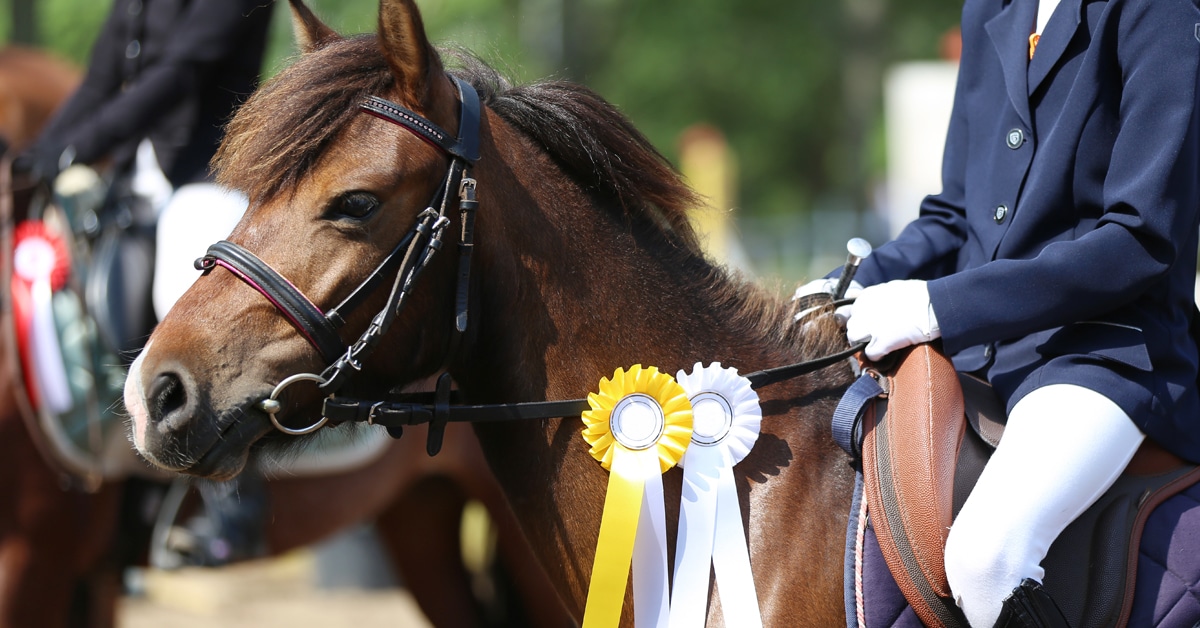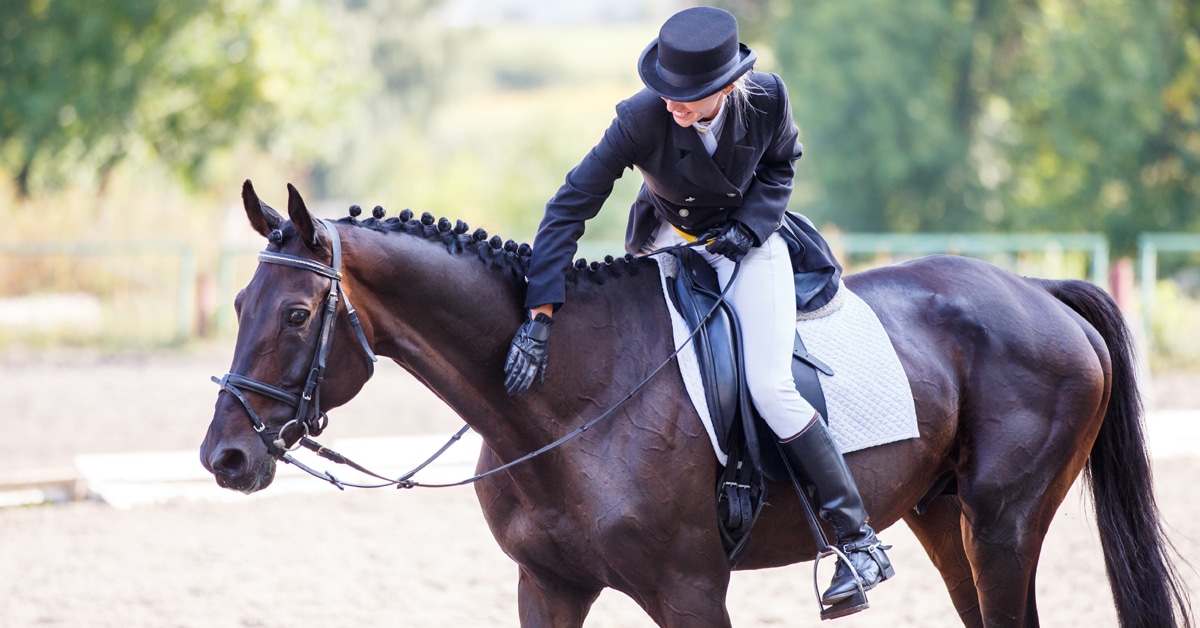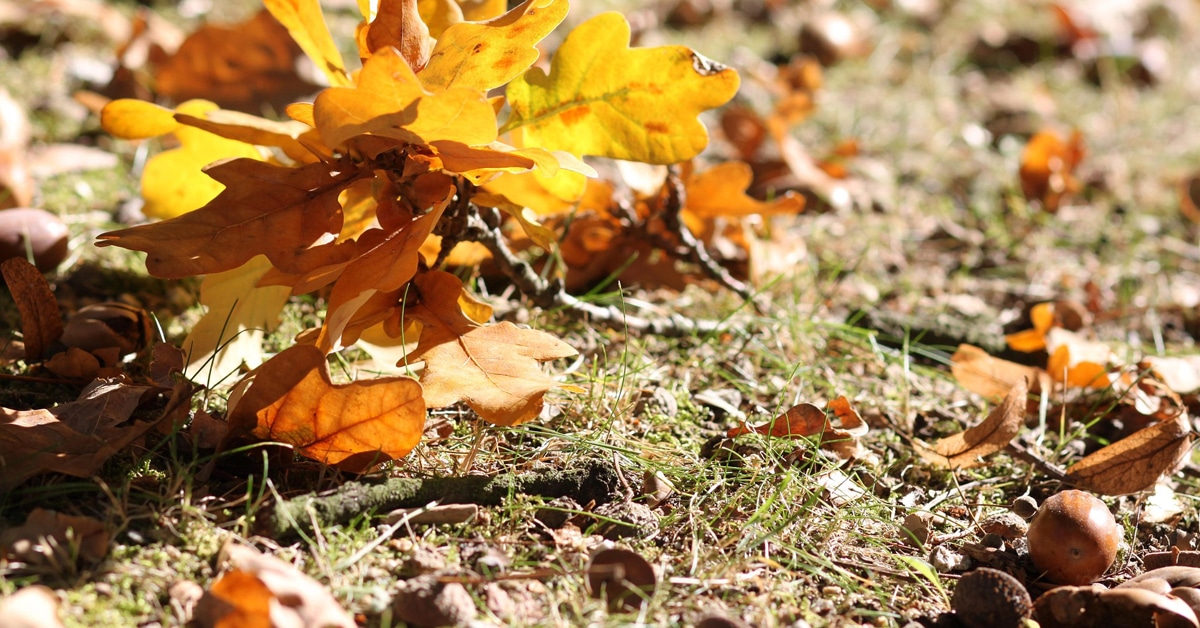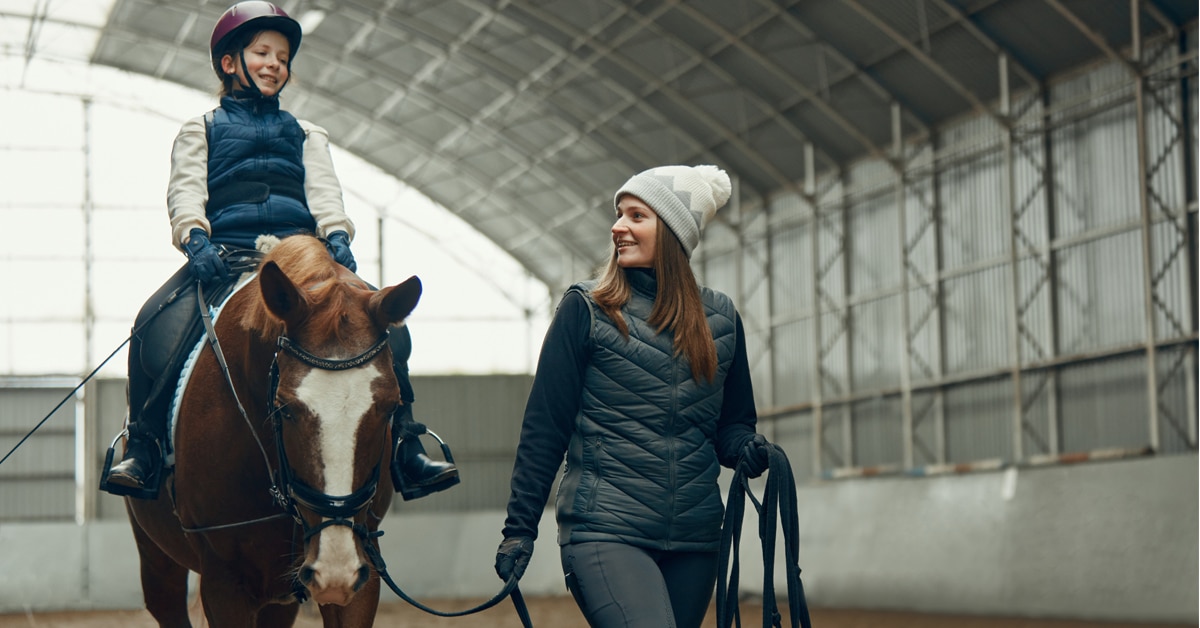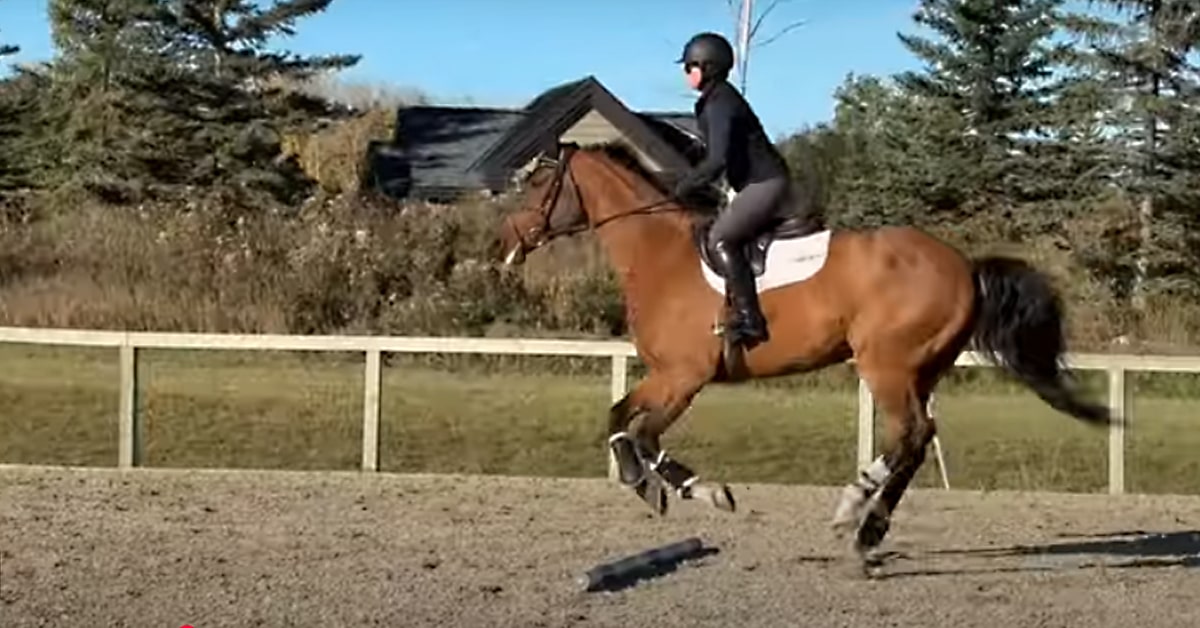This is one of my favourite exercises to prepare for just about anything. There are a few key takeaways from it for both horse and rider.
Set-Up:
Place two poles 27 feet apart. It’s important to have enough space on each side to build up a big, forward gallop in both directions. If you’re working in a smaller ring, set the poles as close to the rail as possible so you can make the widest approach and turn you can.
A 27’ distance is a quiet two-stride for most horses, so that’s where we like to start. This exercise will help you and your horse get comfortable adjusting your stride length — from a collected canter to a big, open gallop — using three different stride options.
Step 1: Quiet Two Strides
Start with a relaxed, steady two strides. Repeat a few times until you both feel comfortable and confident with the rhythm and balance.
Step 2: Galloping One Stride
Next, open up the gallop and aim for one stride. This almost always surprises people — most don’t have quite enough gallop at first. The hardest part is keeping that gallop all the way to the pole. Our instinct is to control the distance by slowing down, but this is a great, low-pressure way to practice maintaining a big, forward canter with little consequence, since you’re just using poles.
Step 3: Collected Three Strides
Finally, collect the canter and ride for three strides between the poles. This is often the hardest variation. The key is to have the horse collected enough that you can soften your hand and let her carry herself without changing the canter when you release. Like the one-stride, the success of the three-stride depends on the quality of your canter before you even turn to the poles.
If your horse is blood-type or gets excited after the one-stride, you may need to repeat the quiet two-stride a few times to settle things before attempting the three-stride again — and that’s totally fine.
The most important thing for the rider is to keep an open mind. Although this exercise may look easy in the video, that’s only because we’ve practiced it many times. There was a time when we couldn’t manage the one-stride or collect enough for the three — and that’s okay. It takes time. Each attempt gives you valuable information about your current strengths and weaknesses. Don’t get discouraged. If there’s a part you can’t quite get yet, work on it, then come back to it in a few weeks.
After accomplishing this exercise, you can refer to the ‘one, two or three’ canter on course. Practice a jump with your ‘one’ canter and then jump a line in your ‘three’ canter. This can be incorporated into many fun exercises within a practice course.
A rider said to me after completing this exercise the first time, “That’s show jumping: can you go and can you whoa?” and it really is that simple!
The Latest


